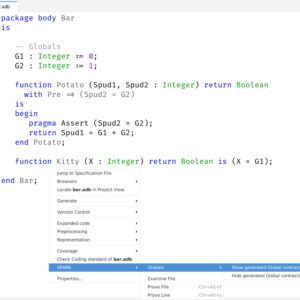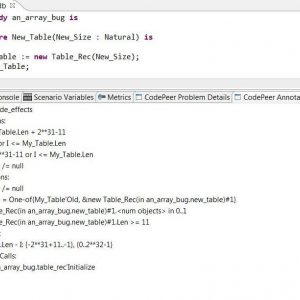by
Simon Buist

Showing Global contracts with GNAT Studio
In the integrated development environment, GNAT Studio, there is now a plugin that inserts the generated Global contracts inline with the code.
2 entries tagged with #Contracts

In the integrated development environment, GNAT Studio, there is now a plugin that inserts the generated Global contracts inline with the code.

Two recent research papers focus on how program contracts are used in practice in open source projects, in three languages that support contracts (Eiffel obviously, Java with JML contracts and C# with Code Contracts). I'm reporting what I found interesting (and less so) in these two studies.